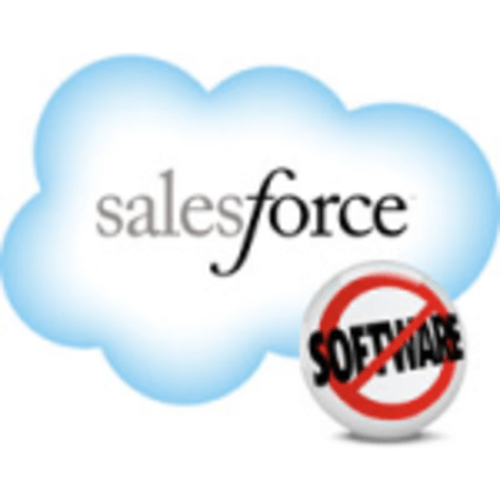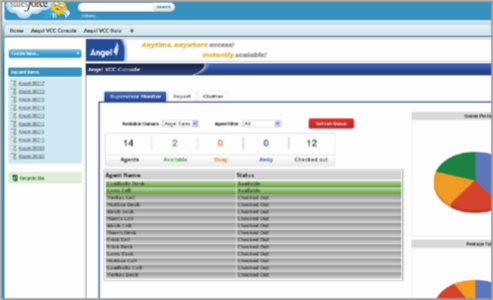No one denies any more the fact that Salesforce.com has become a platform. Some would go so far as to call it an ecosystem, but it may yet need to prove its mettle in that category. At issue: Can three established services in the same market carve out competitive presences for each other inside the Salesforce platform?

On one side of the arena is Citrix, an established brand with about $11.4 billion in market capitalization (Salesforce itself is already at $17.1 billion), and whose GoToAssist brand is already one of the world’s most recognized. On another side is Assistly, which is based on an innovative system of automated “agents” that communicate with customers on a regular basis. And in the third corner is Angel Contact Center, which integrates call center support with business intelligence functions.

Citrix’ GoToAssist for Salesforce allows a contact center agent to communicate directly with contacts within the Salesforce environment, and still be able to remotely control the customer’s PC during help sessions.
“We’ve always integrated with CRMs that contact centers use, but with Salesforce introducing its Service Cloud a couple of years ago, and how large and how quickly it’s grown, integration with Salesforce case management was natural for us,” Elizabeth Cholawsky, general manager of IT services for Citrix, tells RWW.
The integration is not particularly complex, as the figure shows. A GoToAssist button appears in the upper right corner of the Salesforce screen. That button launches a support session, where the agent can gain access the current contact’s remote PC. Without much intervention from the user, the information from that session becomes stored with the Salesforce case, including a recording of the session, the diagnostics from the remote PC, and statistics about the session.
The fact that there doesn’t appear to be any dramatic change in Salesforce itself, Cholawsky tells us, is all part of GoToAssist’s design.
“Any time you introduce anything new into a contact center that changes the flow of what an agent is doing, you’ve got to retrain the agents,” she explains. “If an agent is working in the Service Cloud of Salesforce, he’s got that single button that now allows all the complexity of a remote support session. There’s nothing to be done to add all of the information back into the case. We think it’ll actually streamline some of how agents are using the two products side-by-side today.” Even if Salesforce were to change its workflow for case management down the road, she adds, the integration with GoToAssist will not change.
Assistly’s integration is unique, especially among other Salesforce apps shown at Dreamforce this week, because it’s 1)
two-way
, and 2) partial. The customer support session remains managed in Assistly, which is an application that concentrates on communicating with customers over social media, including Twitter and Facebook, and directly through chat windows. It creates what it calls
agents
(software-based) that represent ongoing sessions between agents (human) and customers (also human).
Assistly’s innovative pricing scheme
– which it calls “Wow” – is “per-agent,” although that’s been erroneously construed to mean “per person,” which is inaccurate.
Unlike many of the other apps shown at Dreamforce, Assistly doesn’t let itself get absorbed into the Salesforce platform like GoToAssist. Instead it enables Salesforce client data to appear inside Assistly, and statistics about ongoing Assistly agent activities to appear inside Salesforce. In doing the latter, Assistly also manages to bring Chatter into the mix of supported media.

Finally, Angel Call Center is an established call center development system, enabling businesses to create sophisticated voice recognition call centers and then deploy them in Angel’s cloud. One platform for building this cloud-based system is Force.com, so Angel’s new integration option does move its entire operation inside Salesforce.
“Angel’s open platform enables full integration with customer and Web service applications such as Salesforce.com, facilitating data-rich interactions that personalize the call experience and provide the intelligence to make decisions,” reads a company white paper (PDF available here) The Salesforce.com integration enables the retrieval and interaction of caller data to facilitate the call process, as well as capture information you request.”
The business intelligence option alluded to here refers to a set of Angel tools for analyzing and reporting on customer feedback, and then making suggestions for enhancing or remedying situations as each case warrants. But another of Angel’s tools (which integrates with Contact Center, which integrates with Salesforce) goes up against GoToAssist head-to-head.
This level of integration does allow Salesforce to act as the call center agent program, with Angel providing the functionality in the background, and “popping in” customer data as callers phone in.
All three of these examples show different strategies for adopting the Salesforce platform, while at the same time leveraging existing assets. Citrix is “all in” with GoToAssist, willing to bet that agents (people) who work in Salesforce do so all the time and don’t perceive themselves as multitaskers. Assistly goes the opposite route, betting that users appreciate Assistly for its own merits and that they only need on-screen help moving back and forth between Salesforce and Assistly. Angel already has its assets significantly invested in Force.com. It’s willing to provide a level of call center integration that approximates that of GoToAssist, but it wants to leave channels open so that business intelligence users can then proceed to Angel to perform other tasks.
Which of these strategies plays out best in this new and emerging market could determine the direction of future Salesforce app architecture, and whether Salesforce is perceived as a platform for developers, or developers as providing a platform for Salesforce.










